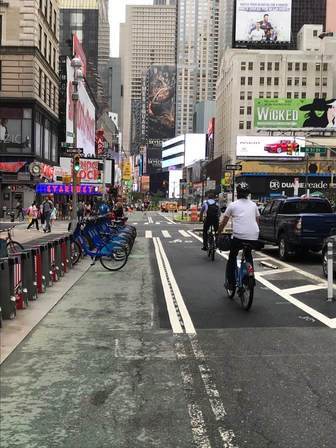 Photo by Nancy Kopans Photo by Nancy Kopans Nature is ever at work building and pulling down,… keeping everything whirling and flowing, allowing no rest but in rhythmical motion, chasing everything in endless song out of one beautiful form into another. – John Muir During a recent forest bathing walk a participant wondered whether “motion = life”. I have pondered this observation, thinking about how not everything alive is in obvious motion. Yet, on closer examination there is motion – a heartbeat, cellular activity, the vascular activity of plants. Perhaps it is this sense of “motion = life” that leads people to comment on how alive the city is, how it has energy, with its buzz of activity – people walking, taxis zooming, neon signs blinking -- like a giant organism. There are few better ways to experience a city and its whirl of motion than on a bicycle. On a bike one moves fast enough to get somewhere, but slow enough to see what’s around. And beyond seeing, there’s what’s experienced. There’s no glass or metal to separate us from surroundings, and with speed quickened from the pace of walking, senses become alert -- the sight of pedestrians stepping into a nearing intersection with the changing of a light, the feel of the breeze (even on a hot, muggy summer day), the sound of a siren somewhere. Streets become like a river, the bike like a kayak navigating white water. Being in motion, the turning of wheels propelled by the force of pedaling, seems to conjure the motion all around while making oneself a part of that motion too. There’s a sense of keeping time, the rhythmic motion of wheels spinning round, the rhythm of people walking, of cars moving, stopping at red lights, moving at green, creating a choreographed dance of people going places, everyone at their own rhythm, but collectively like a grand percussion symphony. The compactness of the city becomes apparent. Neighborhoods awkward to connect on a grid, such as a trip diagonally across town, or identified as geographically distinct zones (Uptown, Midtown, Downtown, East Side, West Side) can be traversed or connected within minutes, while allowing the rider to see all that is in between, stitching together the entire pattern of the city rather than starting at Point A and popping up at Point B, as in the case of a subway, with no clue of what’s in between. With this comes a feeling of independence, of being liberated from the constraints of the contained pods of subways and cars, with the vicissitudes of their interior space, and the slower pace of walking, even at the speed of a New Yorker still slower than on a bike, If distances are felt, so too are the city’s gradients. The paved-over hills and valleys that we are blind to when in a car, bus, or subway become apparent and experienced – a felt reading of the terrain. Biking puts the “hill” back in Murray Hill, Lenox Hill, and Carnegie Hill. And even in 94 degree soupy muggy weather, there’s a breeze. But if there’s freedom on a bike, there’s also a connection to civilization, and in this way biking in the city seems like a pure expression of what it is to be alive and human in a city. A bike after all is forged from metal, pure Vulcan (albeit from earth-sourced element) technology, and pairs beautifully with pavement for a smooth, human-propelled ride, a blending of the natural, ever-moving creatures that we are and technology. Although I’ve done a lot of road riding, including a self-guided cross country trip with a pal and a NYC-New Orleans self-guided trip with another pal, much of my riding these days is via Citibike, New York City’s bike share service. Citibikes are hearty 3-speeders with upright handlebars. They remind me of my childhood bike, with its banana shaped seat, handlebar basket, and plastic streamers radiating from the handlebar tips (how they moved in the wind!). What joy in that memory, awakened when I’m on a Citibike. My own Rosebud. I commute to—and when the daylight is long—from work by Citibike a few days a week. According to my Citibike app dashboard, I’ve gone on 605 rides, lasting collectively 266 hours (time much better spent than in a subway or taxi!), with aggregate mileage thus far of 1,988. That’s just about the distance from New York City to Cheyenne, Wyoming. There are days when I like to imagine that I’m on a stretch of road along that route. On a bicycle, imagination is free to roam.
0 Comments
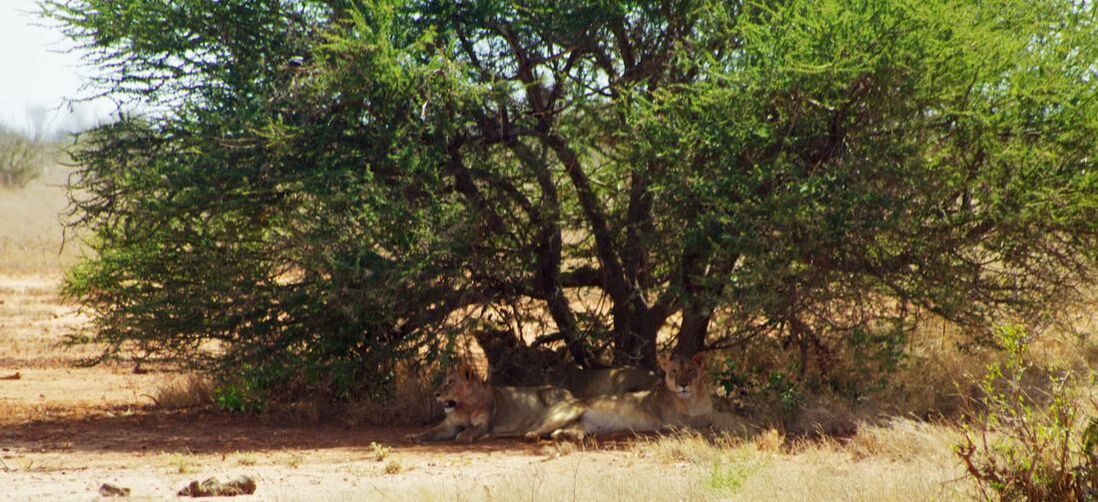 McKay Savage from London, UK, CC BY 2.0 (cropped from original) McKay Savage from London, UK, CC BY 2.0 (cropped from original)If Manhattanhenge, discussed in my prior blog, broadcasts the relationship between Manhattan’s street grid and the sun’s seasonal path, summer’s heat pushes us to respond to the sun’s path with innate astronomical awareness in our daily lives. With summer in full blast, the sun’s heat radiates off sidewalks and buildings and intensifies the temperature. As a walker in Manhattan, whether for pleasure, errand running, or as part of my daily commute, I often assess what side of a street is better shaded, and choose that side for my walk. With the longer stretches of my walk extending in a north-south/south-north direction, this means walking on the east side of an avenue in the morning and the west side in the evening. The difference in temperature is significant. Winter brings the opposite effect: seeing out the sunnier side of the street for greater warmth and light. Orientation to the sun has figured in town and city planning for centuries, typically as a way to enhance warmth and light long before the development of modern heating and lighting systems. Notably, in 1916 New York City passes a zoning resolution to preserve sunlight at street level, recognizing sunlight as a public good. At the time, buildings were limited in height—and sun-blocking effects—by engineering capabilities. With continual improvements in elevators and the use of steel frame structures, building height have multiplied, impacting street-level sunlight. At the same time, urban landscape materials—asphalt, metal, and dark buildings—absorb more sunlight than forests, fields, and snow-covered terrain, resulting in an “urban heat island”, were a city’s temperature is significantly warmer than in surrounding areas. New York City’s heat island effect is most felt at night, when the temperature is 5 to 7 degrees warmer than in surrounding areas. Scientists and urban planners have considered how attention to the interplay of urban structures and sunlight can enhance energy conservation by cooling the city. NASA determined that dark, sunlight absorbing black roofs in New York City reached 170 degrees on July 22, 2011, a peak day in a heat wave that resulted in a city record for electricity usage. By contrast, white roofs were 42 degrees cooler. This led to the widespread installation of white roofs, with the aim of decreasing electricity usage and reducing city temperatures. While not as extreme as the impact of roof-top lightening, a shift from the sunny to the shaded side of a city street in the middle of Julycan offer a welcomed refuge. If you find yourself wandering down a city street during the heat of summer, think about how you intuitively position yourself for cooling comfort. We’re not so different from other animals in this way! 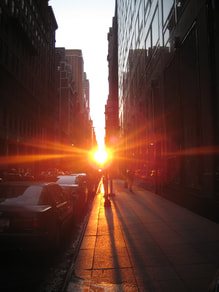 Sevtibidou, CC BY-SA 3.0 Sevtibidou, CC BY-SA 3.0 The sun will set on Thursday and Friday, July 12 and 13, as usual, if it can be said that a sunset is ever “usual”, with endless variations in moisture, temperature, season, cloud cover, axis of the earth relative to the sun, and even air pollution making every sunset unique. Those of us living in Manhattan will experience a particularly spectacular astronomical phenomenon: Manhattanhenge. Manhattanhenge occurs twice a year, in late May and early July, when the setting sun is perfectly aligned with the grid of New York City streets. It is the continually changing relative axis of the earth to the sun that results in Manhattanhenge. From the first day of winter until the first day of summer, the sun sets increasingly north on the horizon. And, it sets incrementally southward on the horizon from the first day of summer until the first day of winter, rising and setting due east and west only on the spring and fall equinoxes (the first days of spring and fall). With the Manhattan street grid--a design proposed in 1811--tilted at 30 degrees east of due north, rather than exactly aligned north-south/east-west, the alignment of the sunset with our street grid occurs off-calendar from the equinox. According to the American Museum of Natural History, "For best effect, position yourself as far east in Manhattan as possible. But ensure that when you look west across the avenues you can still see New Jersey. Clear cross streets include 14th, 23rd, 34th. 42nd, 57th, and several streets adjacent to them. The Empire State building and the Chrysler building render 34th street and 42nd streets especially striking vistas." Full sun on the grid will take place at 8:20 on Thursday, and half sun on the grid will take place at 8:21 on Friday. Think about observing this local phenomenon, how it can remind us of our relative place in the universe and the continual, awe-inspiring cycles that intersect the chasms of our very human-driven metropolis. 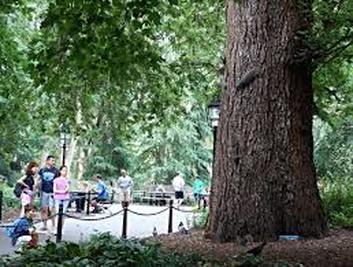 Hangman's Elm, photo by Nancy Kopans Hangman's Elm, photo by Nancy Kopans With the United States commemorating its 242nd birthday comes an opportunity to consider creatures that were alive on July 4, 1776 and are still alive today: trees. New York City is fortunate to have several trees that were alive during this time. Manhattan’s oldest tree, estimated to be at least 315 years old, is an English Elm located in the northwest corner of Washington Square Park. Though named the “Hangman’s Elm” it has not witnessed any hangings. In 1827 Alfred Pell sold 2.5 acres of land that included the tree to help create the park. As English elms are not native to the U.S., the tree is thought to have come from seeds brought to the continent on a Dutch West India Company ship, and thus is an early immigrant that now stands sturdy and tall. The Hangman's Elm is not the only tree in Manhattan that was alive in 1776. George Washington is rumored to have watched the 1776 battle of Washington Heights from the shelter of an elm at 163rd Street and St. Nicholas Avenue, a tree named “the Dinosaur” that is over 300 years old. In an isolated part of Alley Pond Park in Bayside Queens, near the intersection of the Cross Island Parkway and the Long Island Expressway at 58th Road and East Hampton Boulevard sits “the Queens Giant,” a 134-foot tall tulip tree estimated to be 350 to 450 years old. And, a 145-foot talk tulip tree in Staten Island’s Clove Lakes Park is at least 300 years old. The Bronx and Brooklyn do not appear to have trees that were alive in 1776. However, they do have some very old trees. The oldest tree in the Bronx is thought to be an over-200 year old white oak located near the 18th hold of Pelham Bay park’s Split Rock Golf Course. The oldest tree in Brooklyn is likely to be among one of the 30,000 trees in Prospect Park’s vestige of the last remaining natural forest in Brooklyn. In 2009, a 220-year old black oak in Prospect Park was uprooted in a storm. With longevity that stretches the imagination, for the entirety of their lives these ancient living creatures have stood in the same place. Hangman's Elm, The Dinosaur, the Queens Giant, and Staten Island's tulip tree were alive during the times of the Dutch and British occupation, before the United States was a sovereign country. In 1776 the population of New York City (at least of those of European origin) was about 20,000 and plummeted to nearly half of this following the American Revolution, with the departure of the Tories. Inhabitants clustered at the tip of Manhattan. Canal Street was sparsely populated, and Greenwich Village and beyond were rural. The population would grow to 38,000 by 1790 and would multiply over time. And throughout this time stood the very same trees described above, witnesses to generations of immigrants--including my ancestors from Eastern Europe--crossing vast oceans, witnesses to streets paving over the land and to bridges and buildings rising; year after year and ring after ring, they have witnessed New York City transforming from a small overseas outpost into a world city. One wonders what stories the trees would tell if they could speak. 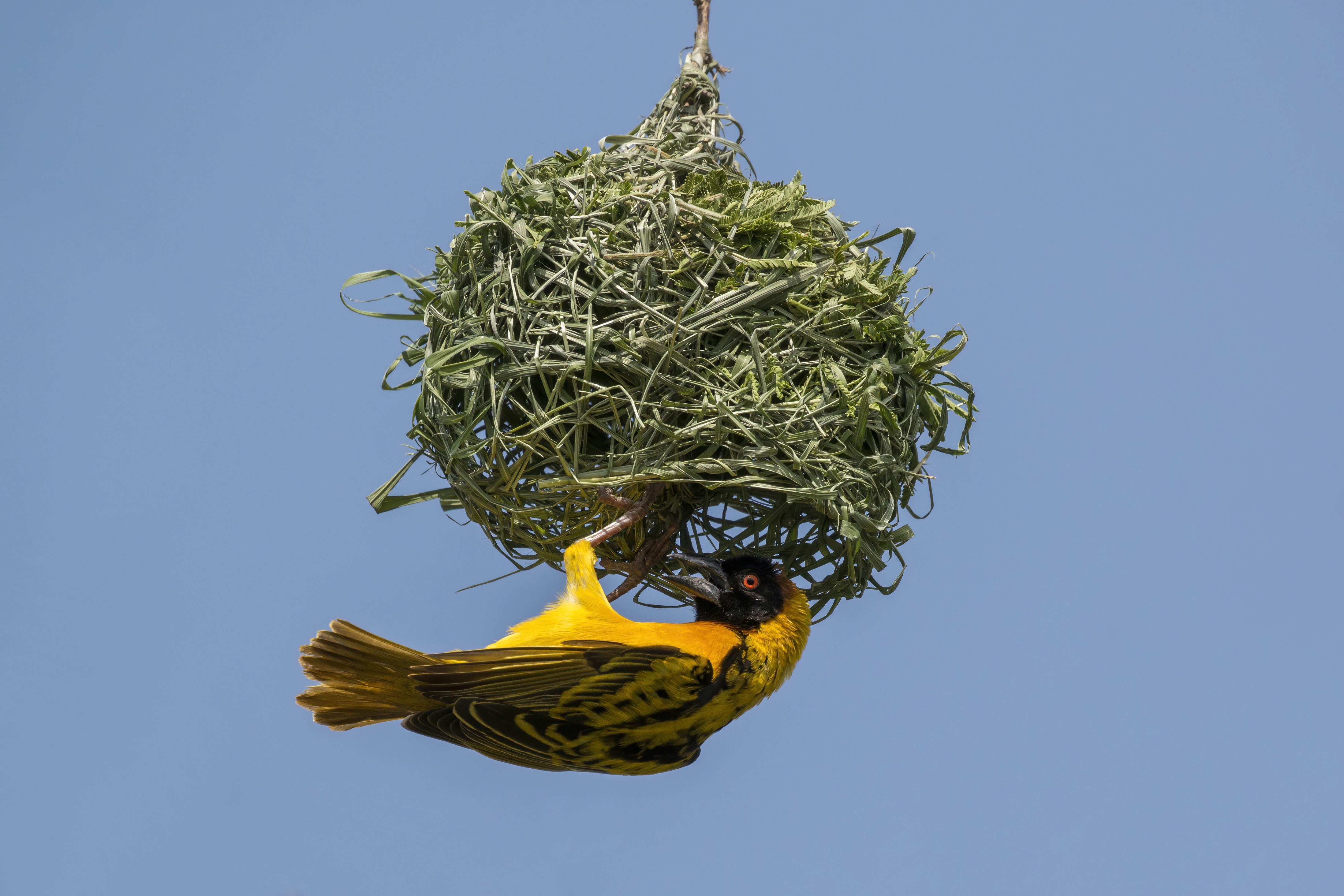 Charles J. Sharp, CC BY-SA 4.0 Charles J. Sharp, CC BY-SA 4.0 Spring migration has come and gone. Non-migratory birds and birds that have migrated as far north as New York City have been at work building nests and tending to their young. Bird nests appear in a variety of locations and forms, from ground nests (shore birds); to bowl-shaped nests in shrubbery or trees (Robins); nests within the cavity of trees (Woodpeckers) or eaves of roofs or other spaces (Swallows); platform nests (Osprey); and nests suspended from tree branches (Orioles). Though much of New York City is covered by concrete, steel, and asphalt, nature's life cycle continues where greenery is present. I have noticed much activity over the past few weeks (Robins tending nestlings near Maintenance Meadow in Central Park and Wood Ducks shepherding their fuzzy-feathered duckling on the Central Park Reservoir along a route rich in food, nudging them in the right direction if they wander off too far). And, avid local birdwatchers have reported numerous sightings (Courtesy Manhattan Bird Alert):
How rich and epic is birds' cycle of life hidden away in trees and among buildings even within our largely paved-over city! |
About this Blog
Hi! I'm Nancy Kopans, founder of Urban Edge Forest Therapy. Join me on an adventure to discover creative ways to connect with nature in your daily life, ways that are inspired by urban surroundings that can reveal unexpected beauty, with the potential to ignite a sense of wonder. Archives
April 2023
Categories
All
|
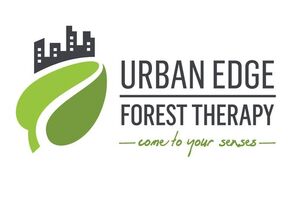
 RSS Feed
RSS Feed